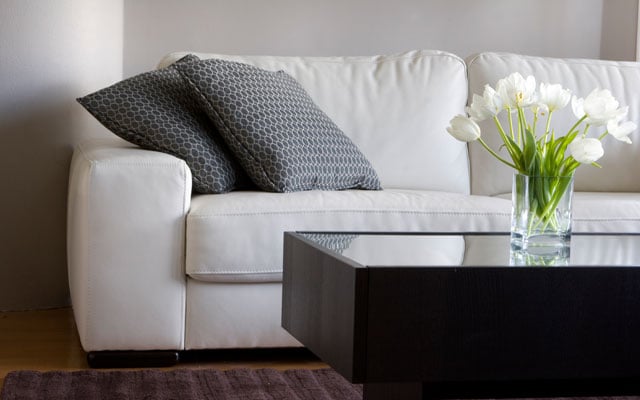Contents insurance generally covers possessions you'd take with you when moving house, or anything that isn't a fixed feature of your home.
To make sure you'd be fully covered if you had to replace the contents of your home – after a fire, for example – it's important to work out how much it would cost to replace all of your contents with new items.

What does a typical contents list include?
- Household goods – appliances like cookers, fridges, televisions and computers.
- Furniture and furnishings – beds, sofas, curtains and carpets.
- Valuables – jewellery, watches, mobile phones, cameras and works of art.
- Personal belongings – clothes, shoes and bags.
- Money – cash, cheques, premium bonds and travel tickets.
Our home contents calculator can help you work out the cost of replacing your possessions, and make sure you don't miss any items.
Once you've worked out the value of your contents, you can get a contents insurance quote from insurers who can offer the level of cover you need.
What will my contents be insured against?
Contents insurance provides cover against a range of events, which commonly include:
- Theft
- Vandalism
- Fire damage
- Water damage
- Storm damage
- Earthquake damage
New-for-old contents insurance cover
Through wear and tear some items in your home will be worth less than they were new, but replacing them if they are lost or damaged could be costly. Many insurers take this into account and offer contents insurance which provides new-for-old cover on most items, except for less durable things like clothes and linen.
Our contents insurance gives you automatic new-for-old cover. So we'll replace your items based upon their present day replacement value, without applying a depreciation to them.
So how does indemnity cover work?
Some insurers offer indemnity cover which takes into account depreciation by wear and tear when an item is replaced. Premiums for indemnity cover are lower, but you'd only receive a portion of the cost of replacing damaged or lost items when a claim is paid.
Will a contents policy cover my valuables?
A typical contents policy will set an upper value limit for single valuable items. If you have valuables with a higher value, check whether additional cover is available for these items.
We treat the following items as valuables:
- Jewellery, watches, furs (other than sheepskin)
- Items made of gold, silver and other precious metals
- Photographic equipment (including video cameras and camcorders)
- Portable audio visual and gaming equipment; laptops, mobile phones, tablets; e-readers or other portable computer equipment (excludes items which need a mains plug)
- Microscopes, telescopes, binoculars
- Portable musical instruments
- Paintings and other works of art
- Collections or sets of stamps or coins or medals
Keep your receipts for items worth over £500 – a valuation or proof of purchase may be required when you make a claim. Also keep photos and a description of valuable items, making a note of any serial and model numbers, as this will help if an item is stolen.
Policy excesses, and how they affect the cost of your premium
The excess is the amount you pay towards a claim on the policy, so check the excesses that apply when you buy insurance. Most insurers specify a compulsory amount, but you can choose to pay an additional voluntary excess, which may reduce the cost of the policy premium.
Additional contents cover
If you'd like cover for valuables and belongings which you take out of the home, look for a policy where optional away from home cover can be added. For extra protection for contents while they are in your home, consider a policy which provides additional accidental damage cover.
On some policies, accidental damage cover is included as a standard feature for particular items. Bear this in mind when you compare quotes for contents insurance.
